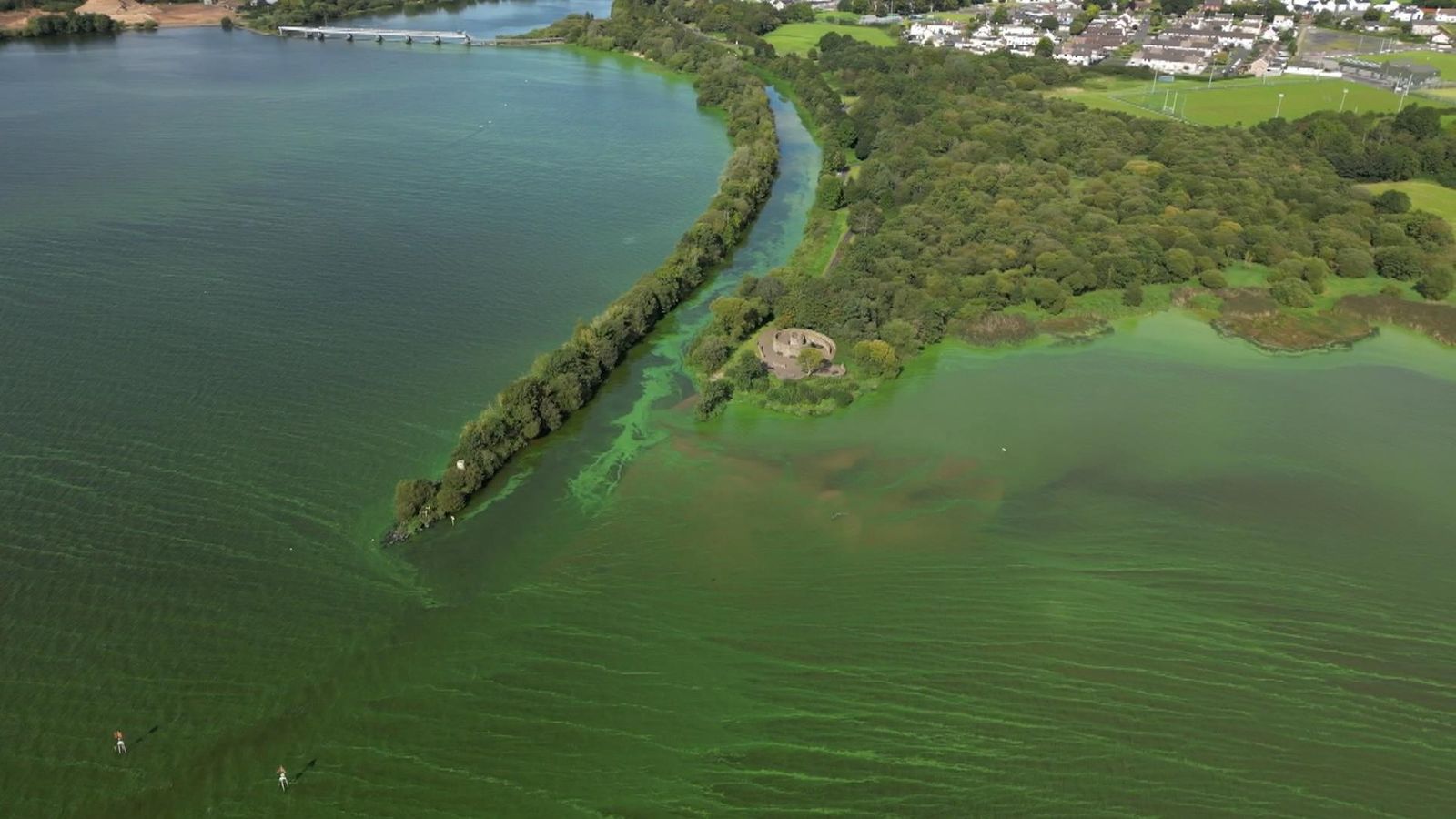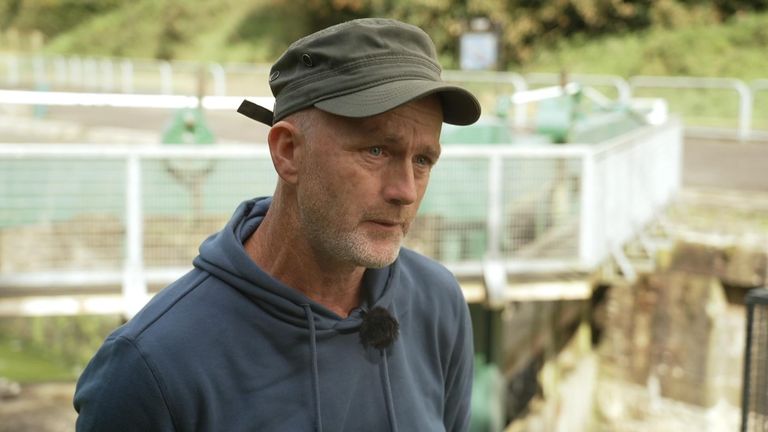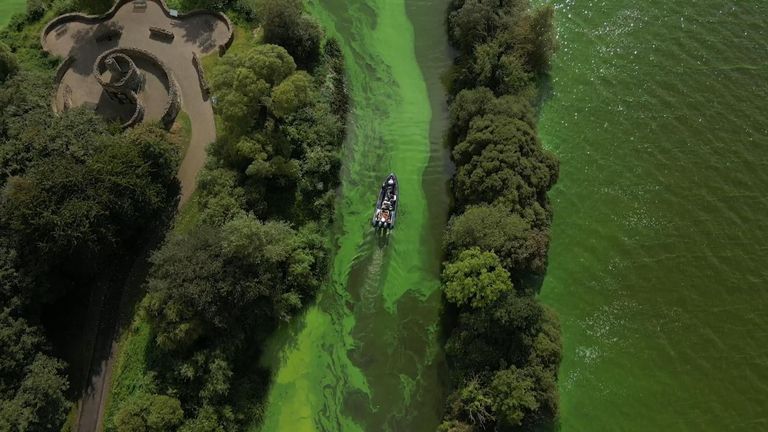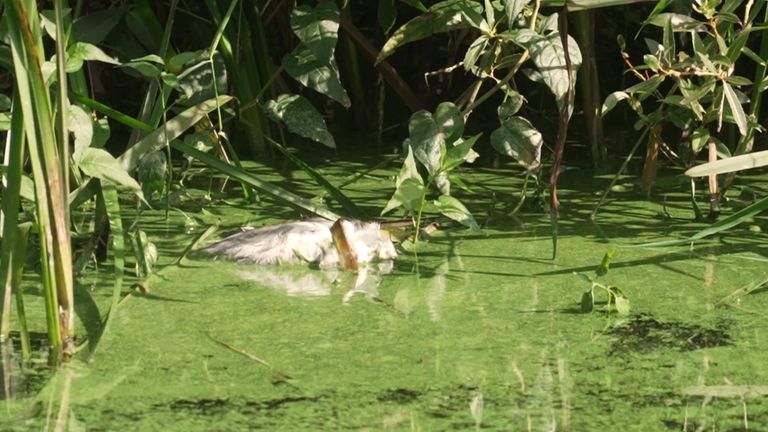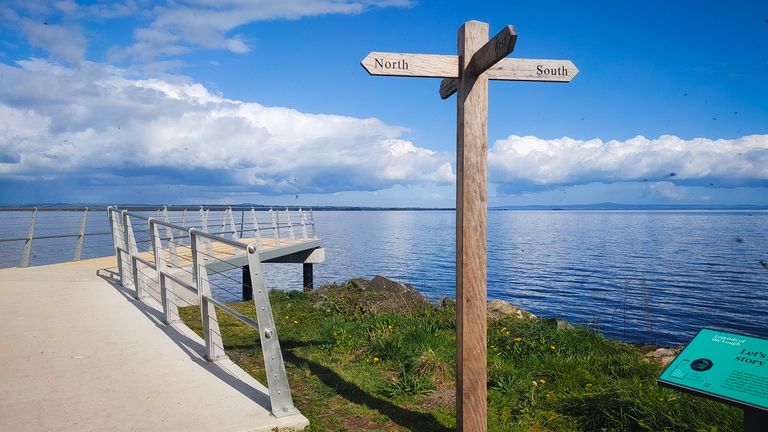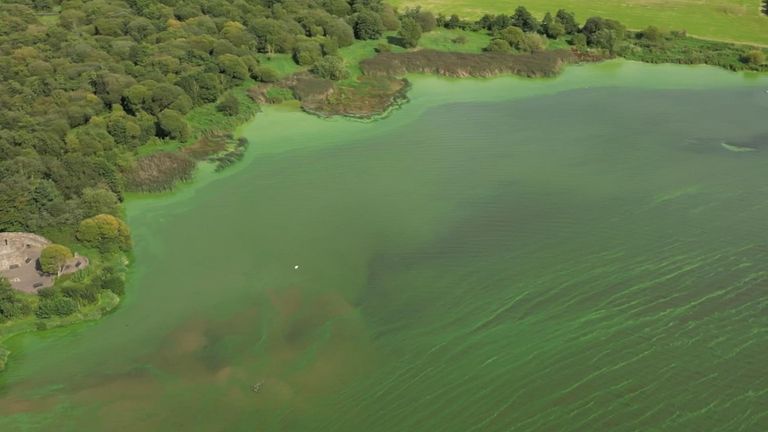Lough Neagh, the largest freshwater lake in the UK and Ireland, is being poisoned to death by a toxic blue-green algae on an apocalyptic scale.
It is killing fish, birds and dogs and there are serious concerns about public health because the lough provides 40% of Northern Ireland‘s drinking water.
Peter Harper, shoreline environment officer with Lough Neagh Partnership, says: “The lough at the minute, I would say, is in a state of emergency and we’re in a state of emergency too in a way in Northern Ireland because we don’t have a government.
“We don’t have an environment minister, we don’t have anyone to come out and see what’s happening.”
The deadly cyanobacteria is mainly caused by excess nutrients – nitrates and phosphates from farming discharge and sewage – and the stench is pungent and nauseating.
Gary McErlain, whose family has fished these waters for generations, is emotional about the state of the lough, which many people consider a national treasure.
He says: “It’s devastating. We have fished from it, it’s been our livelihood, people just love it.
“To think that it’s crying looking [for] our help today and if it’s crying looking [for] our help, we have to do something to try and help it. We’ve broke it and now we need to try and fix it.”
There is a marker in the lough, indicating the location of the extraction pipe where 40% of Northern Ireland’s drinking water begins its long journey.
Beneath the surface resembles a snow globe but with green flakes of algae, a nutrient soup, and despite reassurances, there is concern about public safety.
“If we didn’t have the problem here, I would probably be offshore, open-water swimming,” explains Mary O’Hagan, who’s leading the call for an action plan.
She says: “The risks, to the best of my understanding, are things like headaches, dizziness, nausea.
“Long-term aspects, you can have things like liver damage, neurological damage, so it is not stuff to be played about with.”
Gavin Knox, who has had to relocate his paddleboarding business, says he was “very angry” initially, because “this is a completely avoidable set of circumstances”.
“The issues surrounding the lough are not just Lough Neagh-based. Lough Neagh, to me, is telling the story that all contributories feeding into it have ongoing issues, whether that be from agri-land or sewage being pumped in,” he adds.
More from Sky News:
Libya floods – devastating before and after pics
Government loses bid to relax waterway pollution
With water temperature rising, climate change is a factor, and invasive zebra mussels aren’t helping. They filter the water and sunlight penetrates deeper, photosynthesising the algae.
But there is a general consensus among scientists that humans are mostly to blame – a combination of pollution without penalty and political failure for decades.
